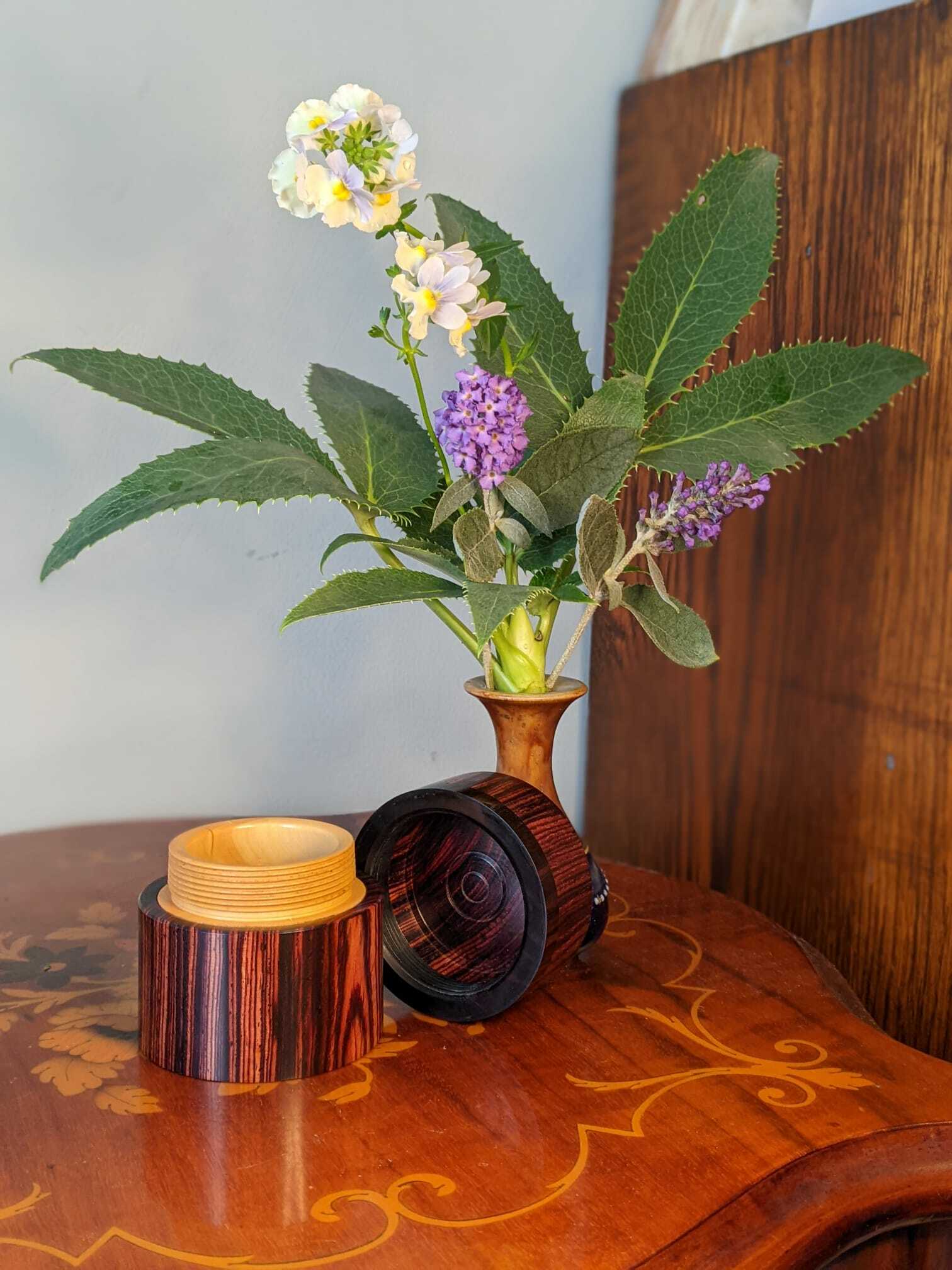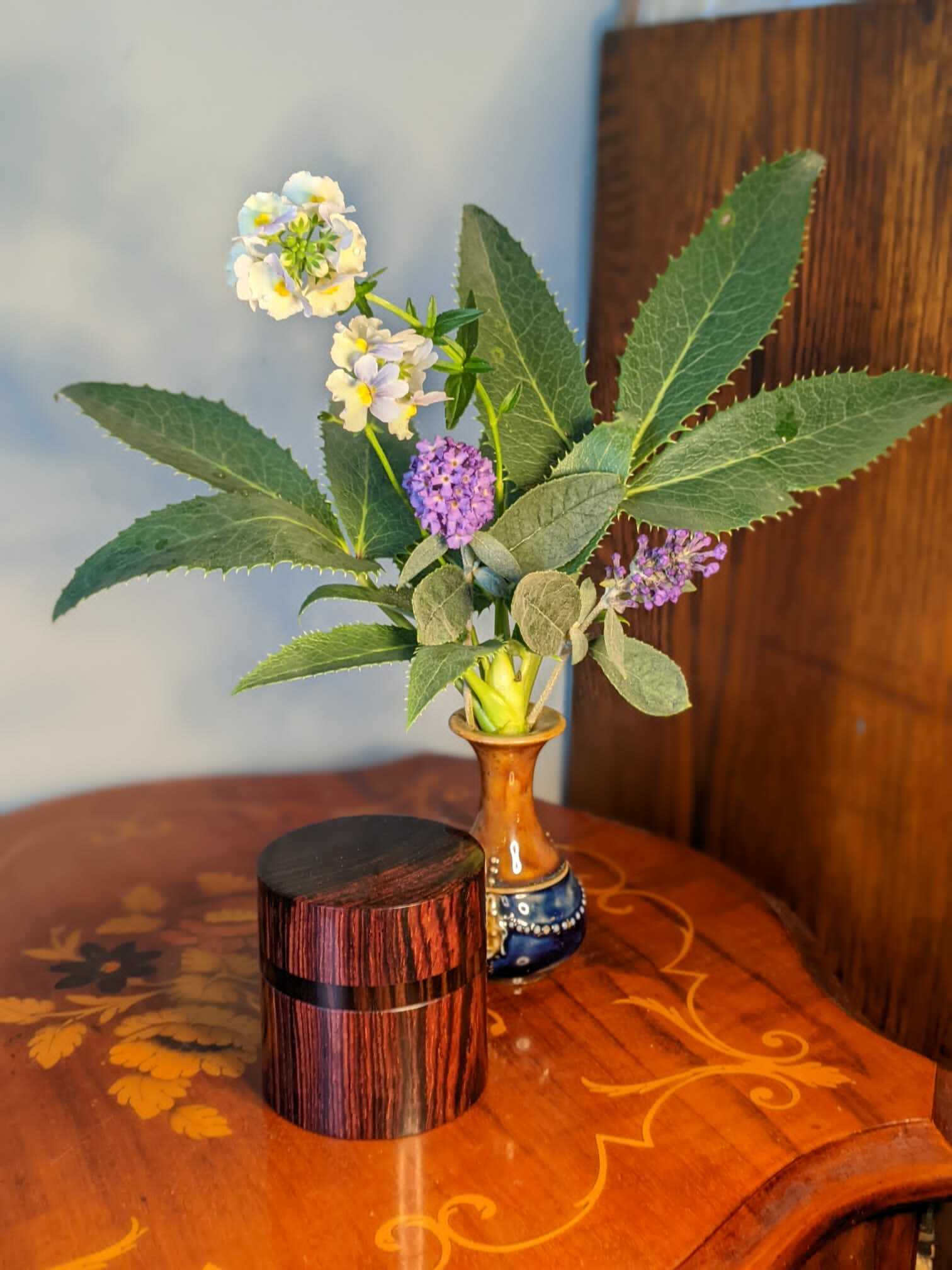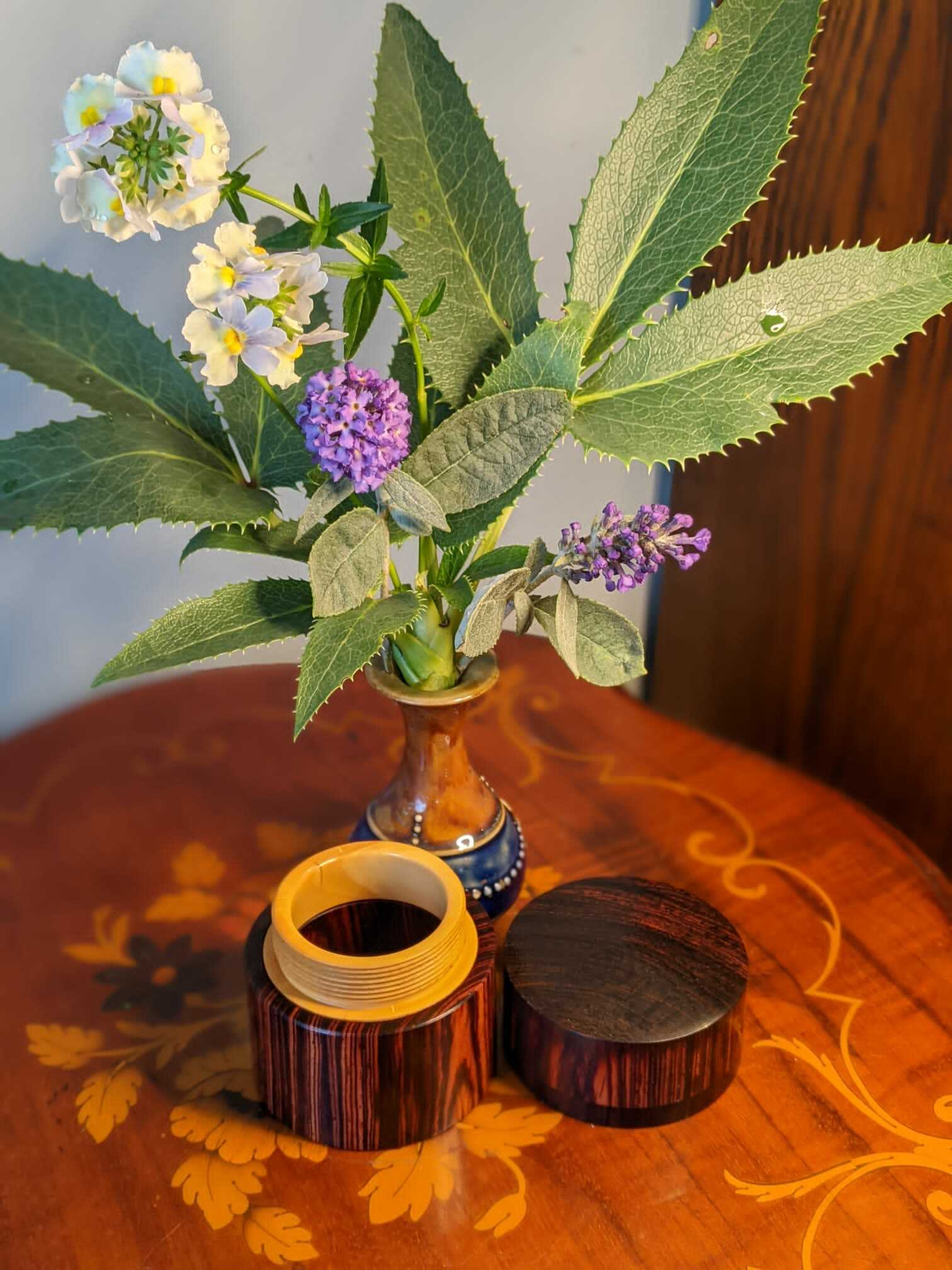Our latest customer project we are proud to showcase is some of Benjamin Maney's lovely work. Benjamin took up wood turning during lockdown and we think he is a talent.
Benjamin recently came into Lincolnshire Woodcraft Supplies here in Stamford and brought the materials to make this beautiful piece.
We asked Benjamin to give us the low down on how it was made...
Thread chasing by hand, or the process of cutting screw threads into wood with traditional hand tools on the lathe, is a somewhat forgotten art, having once been a staple of the production turner’s repertoire. A pair of matching ‘chasers’ are employed to alternatively thread the internal and external walls with their respective tools, with a lathe speed of 250-500rpm, and a slow exact traverse, an identical, incrementally lengthening cut must be made with each pass to avoid a double, or drunken thread. A tricky procedure, but worth sticking with it for some hugely satisfying results, don't be tempted to practise on wood that isn't dense enough...



